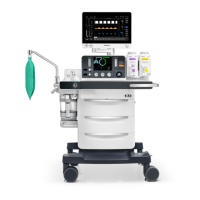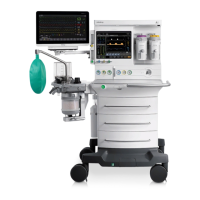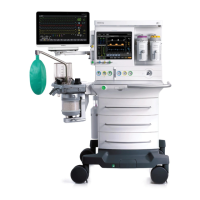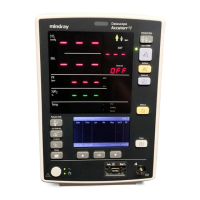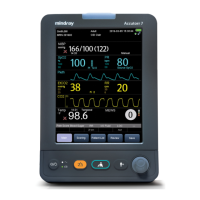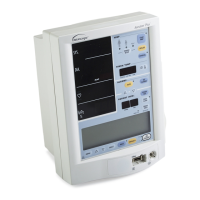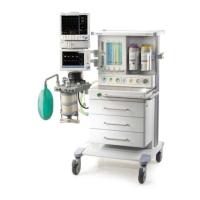Ventilation Modes Operations
5 - 10 046-004667-00 A7™ Operating Instructions
FIGURE 5-9 Set Alarms to Off
5.5.5 Make Settings before Starting Mechanical Ventilation Mode
1. Set the Auto/Manual ventilation switch to Manual. If discharging a patient, select the End
Case button in the Manual tab to enter Standby mode.
2. Select the desired ventilation mode tab.
3. Set the desired ventilation parameters.
4. Select the Preset button (flashing green) on the right of the ventilation tabs to confirm the
ventilation mode.
5. If necessary, push the O
2
flush button to inflate the bellows.
6. If in Standby, exit Standby by touching the main screen.
7. To begin mechanical ventilation, set the Auto/Manual ventilation switch to Auto.
5.5.6 Volume Control Ventilation (VCV)
Volume Control Ventilation (VCV) mode is a fully-mechanical ventilation mode. In the VCV mode,
each time mechanical ventilation starts, gas is delivered to the patient at a constant flow, which
reaches the preset Vt within the gas delivery time. To ensure a certain amount of Vt, the resulted
airway pressure (Paw) changes based on patient pulmonary compliance and airway resistance.
In VCV mode, set Plimit to prevent high airway pressure from injuring the patient. In this mode,
set Tpause to improve patient pulmonary gas distribution and PEEP to improve expiration of
end-tidal carbon dioxide and to increase oxygenation of breathing process.
To ensure the set tidal volume gas delivery, the ventilator adjusts gas flow based on the
measured inspiratory volume, dynamically compensates for the loss of tidal volume arising from
breathing system compliance and system leakage and eliminates the effect of fresh gas as well.
This is called tidal volume compensation.
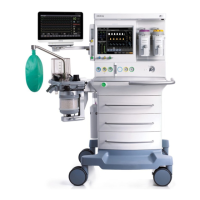
